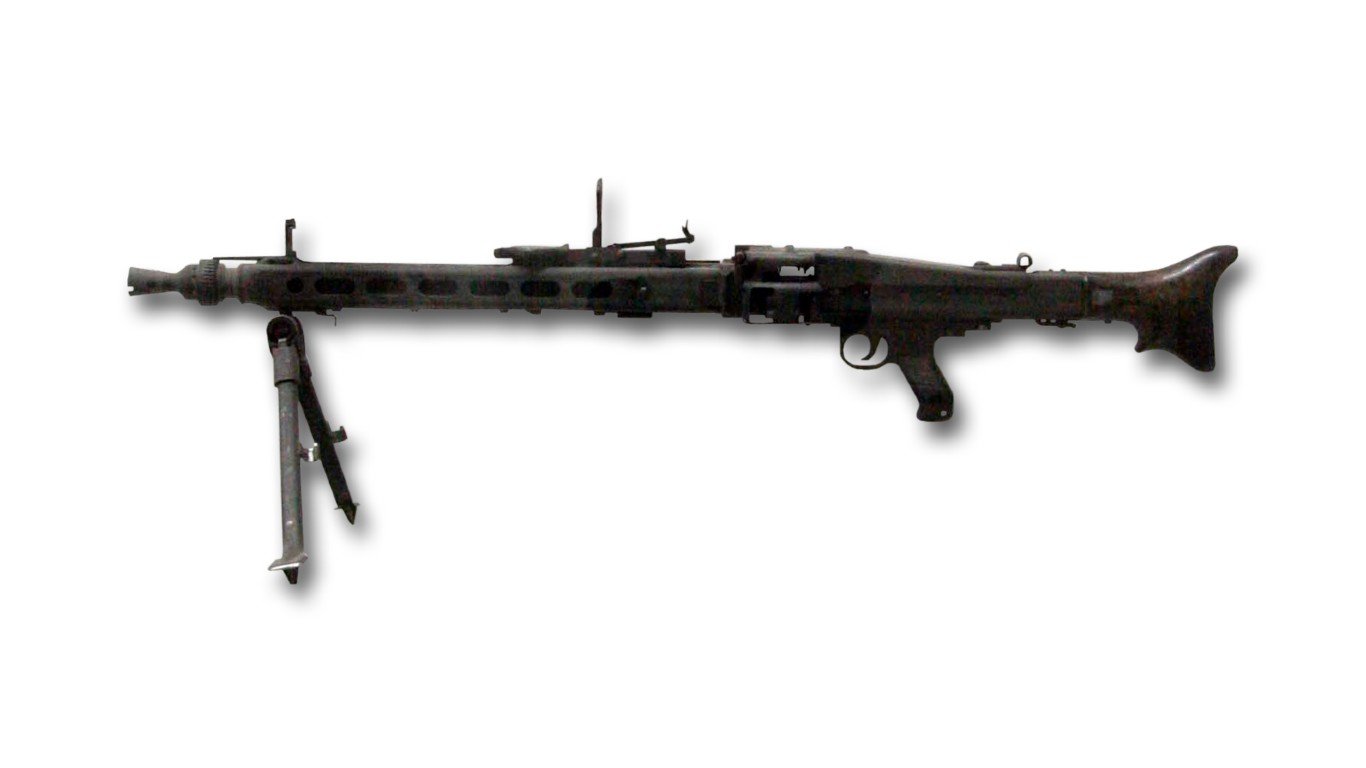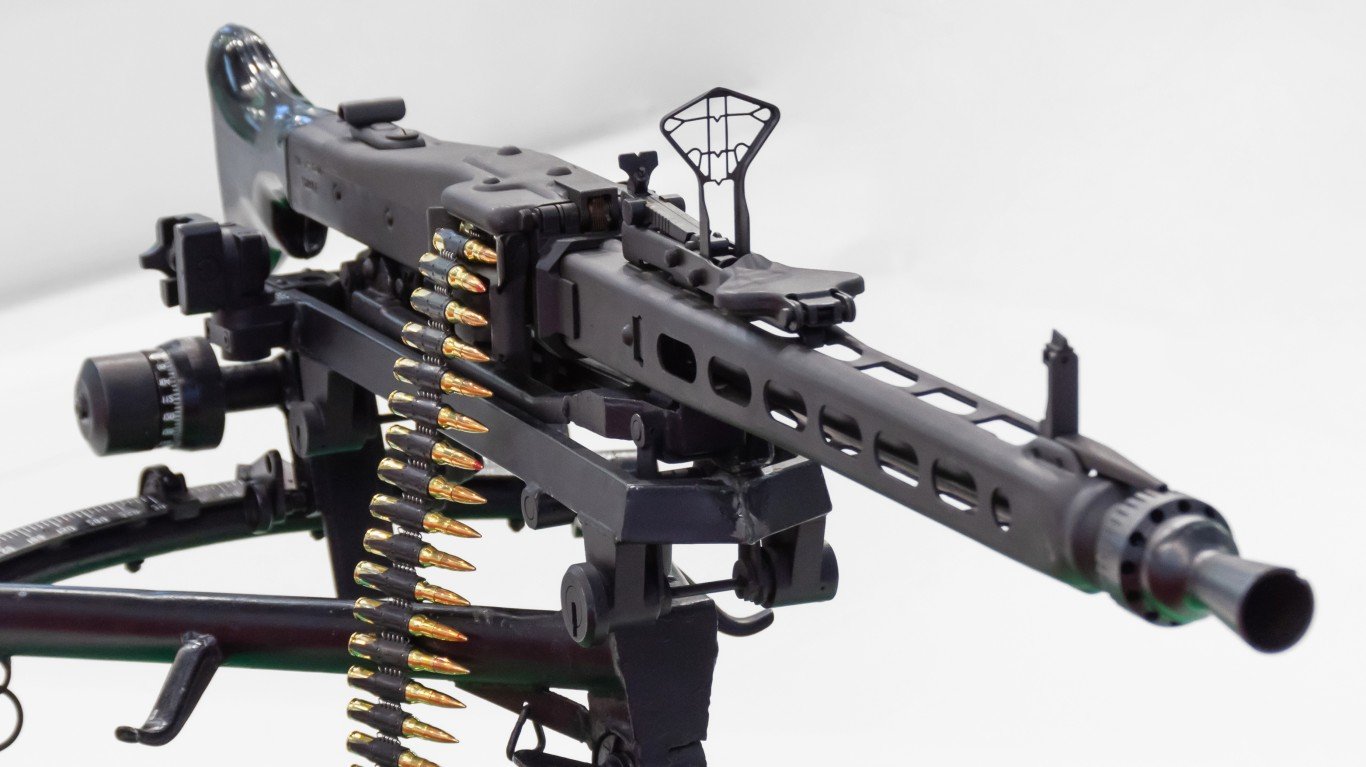

The U.S. Supreme Court recently said it would soon decide whether a ban on bump stocks, which allow semi-automatic weapons to fire rapidly like machine guns, violates federal law. Of course, this consideration is for civilians. In militaries around the world, machine guns — designed for sustained direct fire — are used extensively, many for infantry support. Machine guns are capable of firing hundreds of rounds per minute, and some of the fastest ones can fire at a considerably higher rate. (Also see: every standard issue U.S. military rifle since the American revolution.)
To identify the fastest firing machine guns in the world, 24/7 Wall St. reviewed information on maximum rate of fire (measured in rounds per minute) from Military Today, American Rifleman, and The Range 702, in addition to other online sources. Maximum effective firing range, cartridge, and original manufacturer for each gun came from various sources.
The maximum firing rate for machine guns on this list ranges from 1,200 rounds per minute to a stunning 1 million rounds per minute. The latter, however, is a record established by a prototype machine gun. The battle-hardened second place can fire 6,000 rpms.
Perhaps surprisingly, many of the machine guns on the list are not from modern times. Three date back to the world wars, three others date back to the Cold War and Vietnam War, and three were introduced in the 1970s-1990s. Also, three of the machine guns on the list are prototypes and have not been used in service. The rest, however, have seen action in different wars, and most of those are still used today by different militaries around the world.
Here are the fastest firing machine guns on Earth
9. MG3

- Maximum rate of fire: 1,100-1,200 rpm
- Maximum effective firing range: 3,937 ft.
- Cartridge: 7.62x51mm NATO cartridge
- Original manufacturer: Rheinmetall
Of German origin, the Rheinmetall MG3 of the early Cold War was derived from another gun on this list, the MG42 — one of the most feared weapons used by the Axis during World War II. The belt fed MG3 was introduced when Germany joined NATO in the 1950s, with minor upgrades over the MG42. It was one of the common machine gun types during the Cold War, and its many variants and derivatives are still used today, though light machine guns have replaced many.
8. M1919
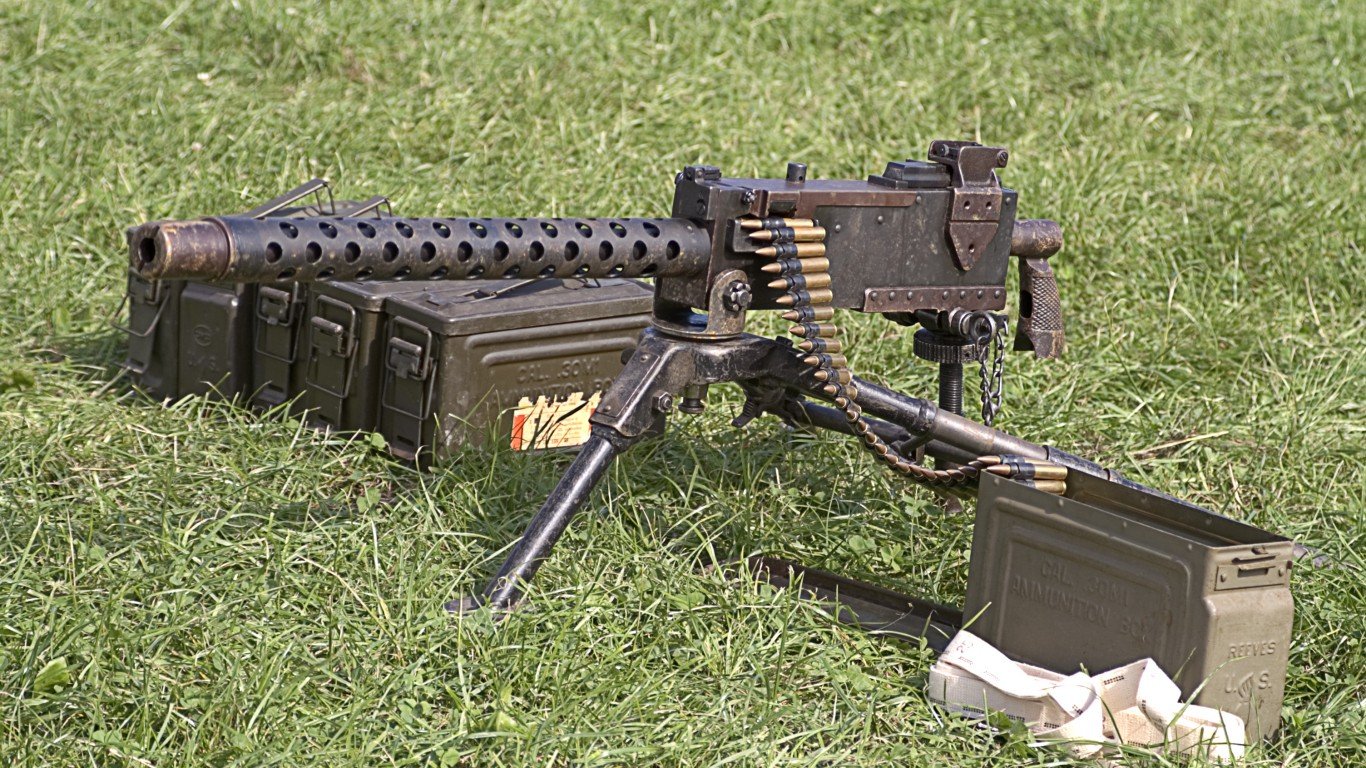
- Maximum rate of fire: 1,500 rpm
- Maximum effective firing range: 4,593 ft.
- Cartridge: .30-06 Springfield rounds
- Original manufacturers: Buffalo Arms Corporation, Rock Island Arsenal, Saginaw Steering Gear
After the U.S. military realized in World War I that water-cooled machine guns, such as the M1917A1, took up too much space in armored vehicles, John Browning developed the M1919A4, which was lighter with its air-cooled barrel design. The iconic M1919 was America’s answer to Germany’s MG42 during World War II. It was more maneuverable and could be mounted on tanks and aircraft.
7. MG42
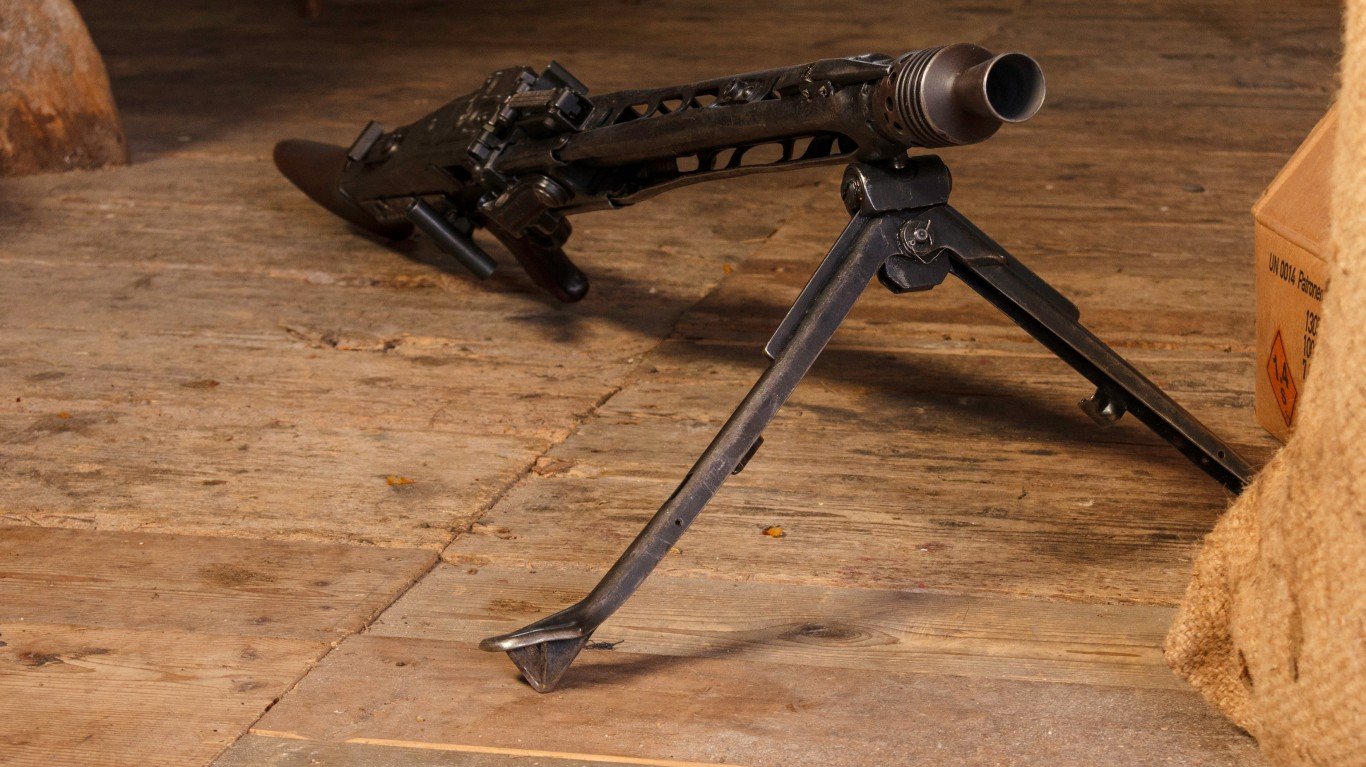
- Maximum rate of fire: 1,000-1,800 rpm
- Maximum effective firing range: 6,561 ft.
- Cartridge: 7.92x57mm
- Original manufacturer: Großfuß AG
Nicknamed “Hitler’s Buzz Saw,” U.S. troops feared the lethal German MG42, partly because of its rapid firing capabilities. Though it tended to overheat, the MG42 was considered to be light-years ahead of the U.S. Browning M-1919A4. Germany produced roughly 400,000 MG42s during the war, according to The National WWII Museum. Postwar variants are still in use today in armies around the world.
6. MG45
- Maximum rate of fire: 1,350-1,800 rpm
- Maximum effective firing range: 2,401 ft.
- Cartridge: 7.92×57 mm
- Original manufacturer: Großfuß AG
This prototype machine gun was the result of material shortages in Germany late in WWII. It was an attempt to reduce material and cost of production of the MG42. Engineering tweaks allowed the MG45 a faster maximum rate of fire but a significantly shorter effective firing range. Other problems included overheating, ammo consumption, and punishing recoil.
5. Heckler & Koch G11
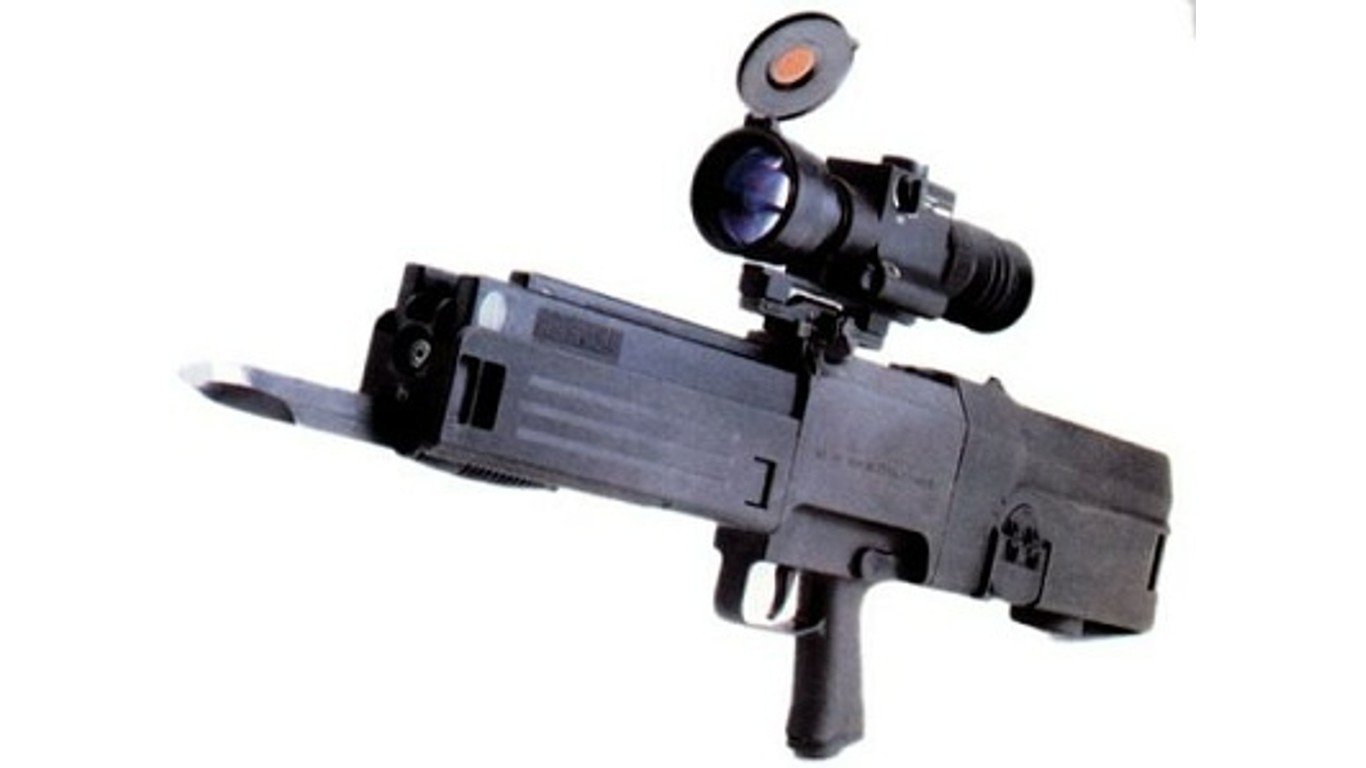
- Maximum rate of fire: 2,100 rpm
- Maximum effective firing range: 1,312 ft.
- Cartridge: 4.73X33mm caseless
- Original manufacturer: Heckler & Koch
Another prototype, this one from the Cold War era, the West German boxy G11 looks like it should be used as a prop in a Science Fiction action movie. The lightweight machine gun is noted for its use of caseless ammunition, which eliminates the cartridge case in order to reduce weight. While this allowed for over 2,000 rpms, the G11 was a complicated and over-engineered gun.
4. GAU-8 Avenger
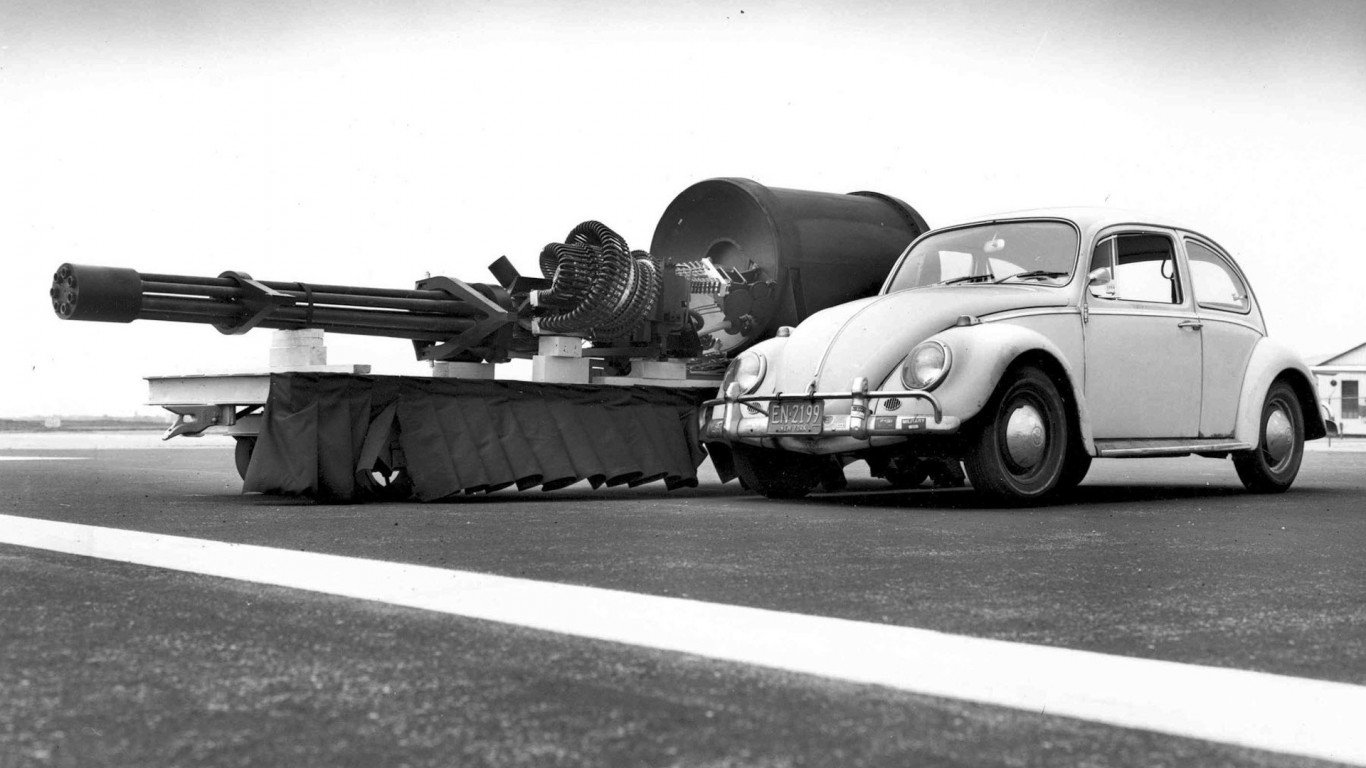
- Maximum rate of fire: 4,200 rpm
- Maximum effective firing range: 4,000 ft.
- Cartridge: incendiary projectile
- Original manufacturers: General Electric, General Dynamics
The GAU-8 Avenger uses seven barrels to achieve its high rate of fire. The system was specifically built for the U.S. Air Force, to be mounted on the A-10 as a close-air support “Tank Buster.” During the Gulf War of 1990-91, this massive hydraulically Gatling-style autocannon destroyed about 3,200 military vehicles and artillery pieces, including 900 tanks.
3. MK15 Phalanx
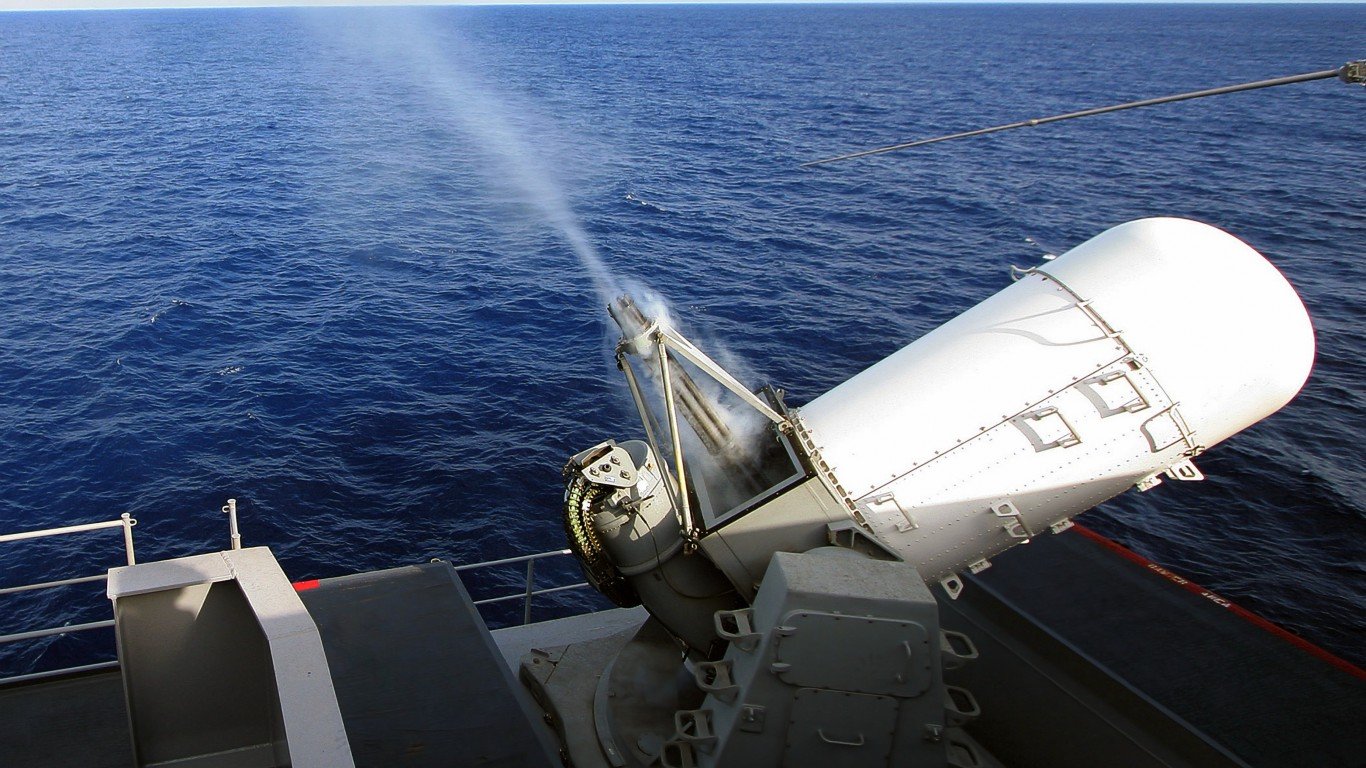
- Maximum Maximum rate of fire: 4,500 rpm
- Maximum effective range: Classified
- Cartridge: 7.62 NATO rounds
- Original Original manufacturer: General Dynamics
The radar-guided, rapid-firing MK 15 Phalanx close-in weapons system can fire between 3,000-4,500 20mm cannon rounds per minute, either autonomously or manually. It is designed to protect naval vessels, providing a last line of defense from missile attacks, aircraft, and littoral warfare threats that have penetrated other fleet defenses. The system, which weighs up to 13,600 pounds, is an autonomous last-chance defense system.
2. M134 Minigun

- Maximum rate of fire: 6,000 rpm
- Maximum effective firing range: 3,280 ft.
- Cartridge: 7.62 NATO rounds
- Original manufacturers: General Electric, DillonAero, Garwood Industries, Profense
The M134 Minigun is a six-barreled, air cooled, medium machine gun used primarily in aircraft of the U.S. military. The Gatling-style M134, which fires standard NATO rounds, relies on electric motors to power the barrels, resulting in a firing rate as much as 6,000 rounds per minute. In Vietnam, the M134 was mounted on helicopters and was used to protect the aircraft from ground-based small arms and RPG fire. The Minigun is still used today, mounted to land, sea, and air vehicles.
1. Metal Storm
- Maximum rate of fire: 1,000,000 rpm
- Maximum effective firing range: 984 ft.
- Cartridge: 9mm
- Original manufacturers: Metal Storm Ltd., DefendTex
The leap in the rate of fire from the M134 Minigun to the Metal Storm experimental weapon is enormous as the latter can fire 1,000,000 rounds per minute. Rather, one prototype Metal Storm discharged 180 rounds in just one-hundredth of a second. While firing a million rounds of caseless 9mm bullets, fired electronically from the 36 barrels in the box-shaped gun, can easily cut through a tank, it would be difficult to use this heavy weapon to sweep across a battlefield effectively.
Sponsored: Want to Retire Early? Start Here
Want retirement to come a few years earlier than you’d planned? Orare you ready to retire now, but want an extra set of eyes on your finances?
Now you can speak with up to 3 financial experts in your area for FREE. By simply clicking here you can begin to match with financial professionals who can help you build your plan to retire early. And the best part? The first conversation with them is free.
Click here to match with up to 3 financial pros who would be excited to help you make financial decisions.
Thank you for reading! Have some feedback for us?
Contact the 24/7 Wall St. editorial team.
